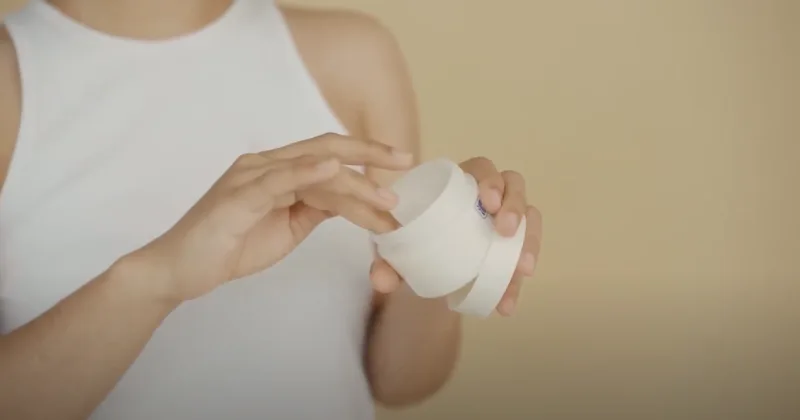The persistent itch is often likened to burrowing deep within the skin and proves challenging to soothe. It typically arises approximately 48 hours after sun exposure and endures for a similar duration. Research indicated that over 40% of individuals experienced ongoing itching for 7 years following the burn incident.
To alleviate sunburn itching during cycling, rub an aloe vera or cool compress on the skin. Taking antihistamines can lessen itching, while using mild moisturizers can hydrate the skin and ease discomfort. For additional relief, consider soaking in an oatmeal bath.
In this blog post, we delve into 8 immediate solutions to alleviate sunburn itching while cycling. Also, we offer 8 Preventive Measures and 11 long-term management strategies.
How To Stop Sunburn Itching While Cycling: 8 Remedies

Sunburn itching refers to a range of conditions causing an itchy rash after exposure to sunlight or UV sources. The most common type is polymorphous light eruption, often seen in cyclists with a hereditary sun allergy. Here are some effective remedies to ease sunburn itching for cyclists.
Quick Methods to Soothe Sunburn Itching
When sunburn itching strikes during or after a cycling session, swift actions can help alleviate the discomfort. Here are some effective methods:
- Take an Oatmeal Bath: Oatmeal can help soothe irritated skin and reduce itching. Put one cup of colloidal oatmeal in a lukewarm bath and soak for 15-20 minutes. Repeat as needed for relief.
- Using Cool Compresses: Cool compresses can offer immediate, temporary relief from sunburn itching. Soak a clean cloth in cool water. Do not use ice or extremely cold water as it can shock the skin and increase discomfort.
Place the cool, damp cloth on the sunburned, itchy area. Leave the compress on for 15-20 minutes at a time. Throughout the day, reapply as needed.
Best Over-the-Counter Creams for Sunburn Itching
When dealing with sunburn itching, over-the-counter (OTC) creams can provide significant relief. Here are some of the best options:
- Hydrocortisone Cream: Hydrocortisone cream is a potent option for managing sunburn itching, but it should be used correctly to avoid side effects. Infuse a thin layer 1-4 times daily as needed. It reduces inflammation and itching by suppressing immune responses.
- Calamine Lotion: Shake well before use and apply directly to sunburned skin. Cooling sensations are provided by it, as well as its ability to dry out blisters.
- Antihistamine Creams: Follow the instructions on the packaging for application frequency. It helps alleviate itching by blocking histamine release.
Natural Remedies: Aloe Vera and More
Natural remedies can be a soothing alternative to chemical treatments for sunburn itching. Some effective options include:
- Aloe Vera: Use fresh aloe vera from the plant or a commercial gel. It provides a cooling effect and promotes healing.
- Coconut Oil: Massage coconut oil into the sunburned area. It moisturizes the skin and reduces peeling and itching.
- Oatmeal Paste: Mix ground oatmeal with water to form a paste. Paste should be applied to the affected area and left on for 15-20 minutes. It soothes the skin and reduces itching.
Avoid Sunburn Itching While Cycling: 8 Preventive Measures
When your sunburn starts to peel, it’s a sign that the healing process is underway. While this phase can be uncomfortable and itchy, in rare instances, it can escalate to what’s known as “hell’s itch” or “the devil’s itch.” This sensation is described as an intense, deep, throbbing itch that persists for several days following a sunburn.
Effective Sunscreen Application to Prevent Sunburn Itching
Proper sunscreen application is crucial in preventing sunburn and the subsequent itching that can accompany it. Here are some effective tips:
Choose a Broad-Spectrum Sunscreen:
SPF 30 or higher is advisable for sunscreen. Choose Broad-Spectrum sunscreens that shield against both UVA and UVB rays.
- Apply Generously and Evenly: Cover your entire body with at least one ounce. Don’t forget often-missed spots like the back of your neck, ears, and the back of your legs.
- Reapply Regularly: Reapply every two hours, or more often if sweating heavily. Reapply immediately after swimming or toweling off protection.
Protective Clothing and Gear for Cyclists

Wearing the right clothing and gear can significantly reduce the risk of sunburn and itching while cycling.
- UV-Protective Clothing: Opt for lightweight, long-sleeve jerseys designed with UV protection.
- Cycling Gloves: Protect your hands from sun exposure with UV-protective gloves.
- Cycling Helmets with Visors: Helmets with built-in visors offer additional protection for your face and eyes. Ensure the helmet is made from UV-resistant materials.
- Sunglasses: Keep your eyes protected by wearing sunglasses which filter UVA and UVB rays 100 percent. Choose wrap-around sunglasses to protect the sides of your eyes.
Importance of Timing: Cycling During Low UV Exposure Hours
Timing your rides to avoid peak UV intensity can minimize sun exposure and prevent sunburn itching.
Avoid Peak Hours
The sun’s rays are strongest between 10 a.m. and 4 p.m. Plan rides outside of these hours when possible.
- Early Morning or Late Afternoon: These rides offer lower UV intensity and cooler temperatures. Establish a cycling routine that aligns with these times for better overall protection.
- Check UV Index: Use weather apps or websites to check the UV index before heading out. Consider indoor training or alternative activities when the UV index is high.
Long-term Strategies to Manage Sunburn Itching: 11 Methods
Although the percentage of cyclists experiencing itching tends to decrease with time, a significant number still endure this discomfort long after the initial injury. Here, we present long-term preventive measures for managing sunburn itchiness during cycling.
Hydration and Its Role in Reducing Sunburn Itching
The proper maintenance of hydration is essential for the health of the skin in general, and can significantly reduce sunburn itching in the long term.
- Daily Water Intake: Try to consume eight glasses (64 ounces) of water every day. Cyclists may require more water due to physical exertion and sweat loss.
- Hydrating Foods: Incorporate water-rich foods like tomatoes, cucumbers, watermelon, and oranges into your diet.
- Electrolyte Balance: Consume foods rich in electrolytes, such as bananas and leafy greens, to support hydration.
Nutritional Tips to Improve Skin Health
Balanced diets that support skin health can help manage and prevent sunburn itching. Here are some antioxidant-rich foods are explained.
- Vitamin C: Citrus fruits, strawberries, and bell peppers can boost collagen production and repair skin.
- Vitamin E: Nuts, seeds, and spinach provide protection against UV damage.
- Healthy Fats: Found in walnuts, fatty fish, flaxseeds, and omega-3s help reduce inflammation and promote skin health.
- Avocados: Rich in healthy fats and vitamins, avocados nourish the skin and improve its elasticity.
Consistent Skincare Routine for Cyclists

Consistent skincare is paramount for preventing and managing sunburn itching.
- Daily Cleansing: Use a mild, hydrating cleanser that won’t strip the skin of its natural moisture. Cleanse the skin twice daily, especially after cycling.
- Moisturizing: Choose a moisturizer that contains ingredients like hyaluronic acid and glycerin to maintain skin hydration. For maximum moisture retention, apply a moisturizer after showering.
- Sun Protection: Apply broad-spectrum sunscreen daily, even on cloudy days. Reapply sunscreen every two hours during prolonged outdoor activities.
- Weekly Exfoliation: Use a gentle exfoliator twice weekly to address dead skin cells and promote healthy skin turnover.
By integrating these long-term strategies, cyclists can effectively manage sunburn itching, ensuring better skin health and a more comfortable riding experience.
Conclusion:
What a journey, right? Dealing with sunburn vulnerability and the ensuing itch can be a real nuisance when you’re out cycling. But fear not, there are ways to bid farewell to those uncomfortable moments.
By integrating protective measures into your cycling routine – such as proper sunscreen application, wearing suitable clothing, and adopting a comprehensive skincare regimen – you can significantly minimize these risks.
Remember to keep yourself hydrated, maintain a healthy diet, and pay attention to your skin’s needs. If you notice severe sunburn or signs of infection, seek medical advice promptly.
While sunburn itching might be a common woe for cyclists, it shouldn’t dampen your love for cycling. Stay safe in the sun and keep pedaling, cyclists! Remember, it’s your journey, and sunburn itching shouldn’t be allowed to steer the wheel.
FAQs
How Do Sun Sleeves Compare To Sunscreen For Cycling?
Sun sleeves offer a convenient alternative to sunscreen for cycling by providing continuous protection without the need for reapplication. The fabric’s cooling effect enhances comfort on warm days, making them versatile for outdoor activities. With sun sleeves, you can stay protected from harmful UV rays throughout your cycling adventures.


